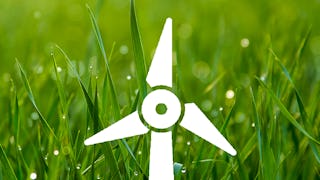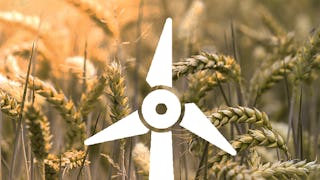The energy revolution in underway. Renewable energy is growing at an astounding pace - notably in electricity. Wind turbines and solar photovoltaic (PV) systems account for most new power plants built worldwide, and are essential to building a low-carbon and sustainable energy future. As a result, there are countless new opportunities in renewable electricity.

Gain next-level skills with Coursera Plus for $199 (regularly $399). Save now.

Renewable Power and Electricity Systems
This course is part of Renewable Energy Specialization

Instructor: Paul Komor
17,736 already enrolled
Included with
(297 reviews)
Recommended experience
What you'll learn
How electricity systems work, from both technical and institutional perspectives
-The challenges and opportunities arising from renewables in electricity systems
Skills you'll gain
Details to know

Add to your LinkedIn profile
5 assignments
See how employees at top companies are mastering in-demand skills

Build your subject-matter expertise
- Learn new concepts from industry experts
- Gain a foundational understanding of a subject or tool
- Develop job-relevant skills with hands-on projects
- Earn a shareable career certificate

There are 5 modules in this course
The first lesson provides an overview of the course. The second lesson explains how electricity is measured and defined, and then dives into the market and technical details of the two fastest-growing renewable electricity technologies: wind turbines and solar photovoltaic (PV).
What's included
12 videos6 readings1 assignment1 discussion prompt
Electricity systems - also called grids - must provide reliable electricity, all the time. This task is further challenged by the rapid growth in wind turbines and solar PV, which are subject to fluctuations in the wind and the sun. These lessons explain how electricity systems use different types of power plants to provide reliable electricity, and then explores the rapidly changing topic of ‘grid integration’ - how to integrate large amounts of new wind and solar PV while maintaining grid reliability.
What's included
10 videos3 readings1 assignment
Two specific tools to ease grid integration of variable renewables stand out for their potential: Storage and demand flexibility. These lessons discuss how storage and demand flexibility work, describe their current status and limitations, and identify key opportunities.
What's included
14 videos4 readings1 assignment
Electricity systems’ institutional and regulatory structures are changing worldwide, and competition is playing a growing role in electricity generation. Why is this happening, and what does it mean for renewables? These lessons use case studies of Ghana, France, the UAE, and others to illustrate how the electricity industry is shifting, and discuss the growing role of Independent System Operators (ISOs) in grid operation and planning.
What's included
11 videos5 readings1 assignment
Renewable electricity is growing at an astounding pace, and the electricity industry is shifting towards greater use of competition in electricity generation. These lessons pull all the course material together and show how the pieces fit together.
What's included
4 videos1 assignment
Earn a career certificate
Add this credential to your LinkedIn profile, resume, or CV. Share it on social media and in your performance review.
Instructor

Offered by
Explore more from Environmental Science and Sustainability
 Status: Preview
Status: PreviewUniversity of Pennsylvania
 Status: Free Trial
Status: Free TrialUniversity of Colorado Boulder
 Status: Free Trial
Status: Free TrialL&T EduTech
 Status: Free Trial
Status: Free TrialUniversity of Colorado Boulder
Why people choose Coursera for their career




Learner reviews
297 reviews
- 5 stars
76.76%
- 4 stars
18.18%
- 3 stars
3.36%
- 2 stars
0.67%
- 1 star
1.01%
Showing 3 of 297
Reviewed on Jun 5, 2022
Quite interesting since it provides an updated view of the market, where we are and where we are going.
Reviewed on Jan 30, 2022
Wonderful high level overview. The instructor was able to make everything very understandable.
Reviewed on Mar 8, 2024
It's very interesting and wonderfully presented course.
Frequently asked questions
To access the course materials, assignments and to earn a Certificate, you will need to purchase the Certificate experience when you enroll in a course. You can try a Free Trial instead, or apply for Financial Aid. The course may offer 'Full Course, No Certificate' instead. This option lets you see all course materials, submit required assessments, and get a final grade. This also means that you will not be able to purchase a Certificate experience.
When you enroll in the course, you get access to all of the courses in the Specialization, and you earn a certificate when you complete the work. Your electronic Certificate will be added to your Accomplishments page - from there, you can print your Certificate or add it to your LinkedIn profile.
Yes. In select learning programs, you can apply for financial aid or a scholarship if you can’t afford the enrollment fee. If fin aid or scholarship is available for your learning program selection, you’ll find a link to apply on the description page.
More questions
Financial aid available,





